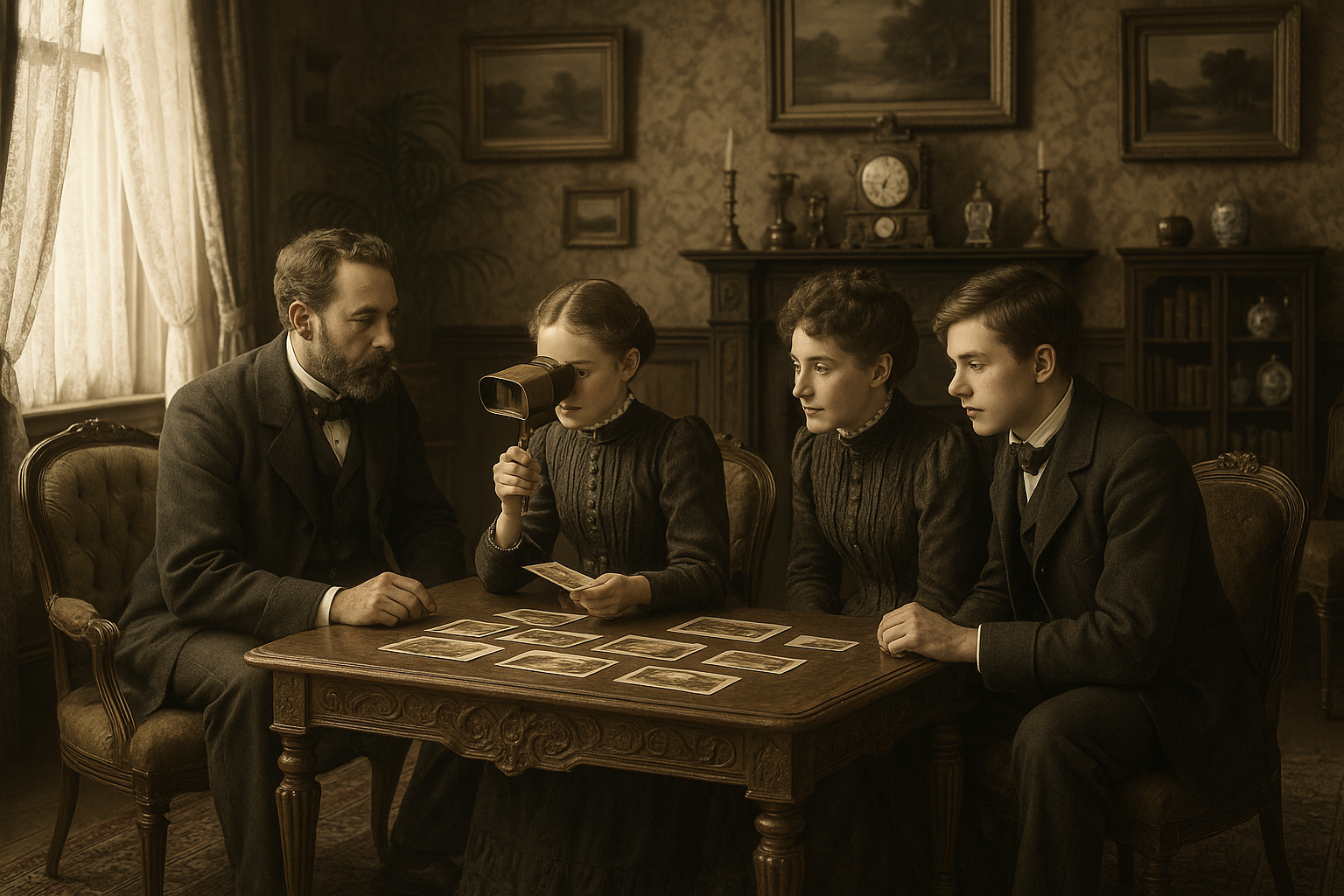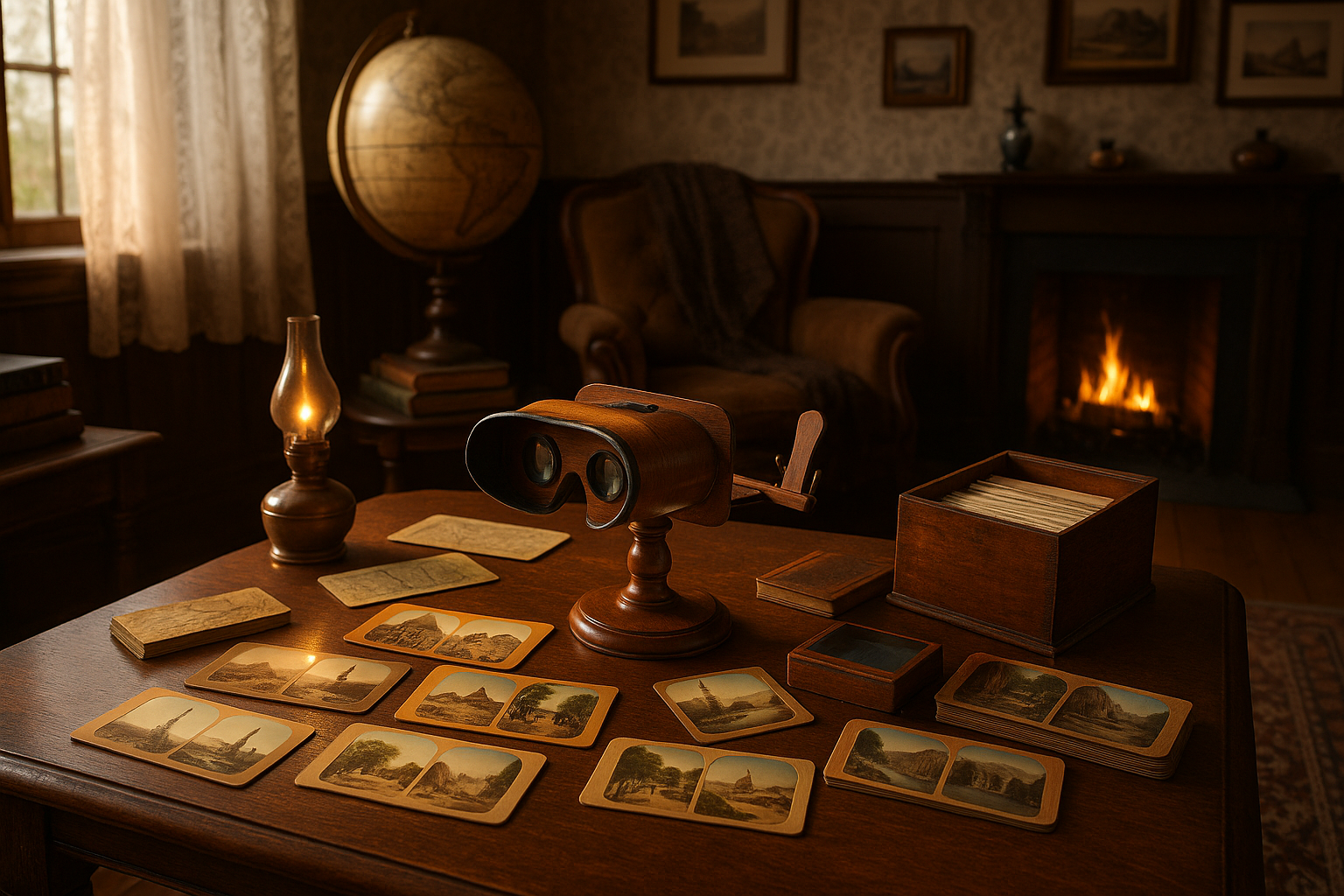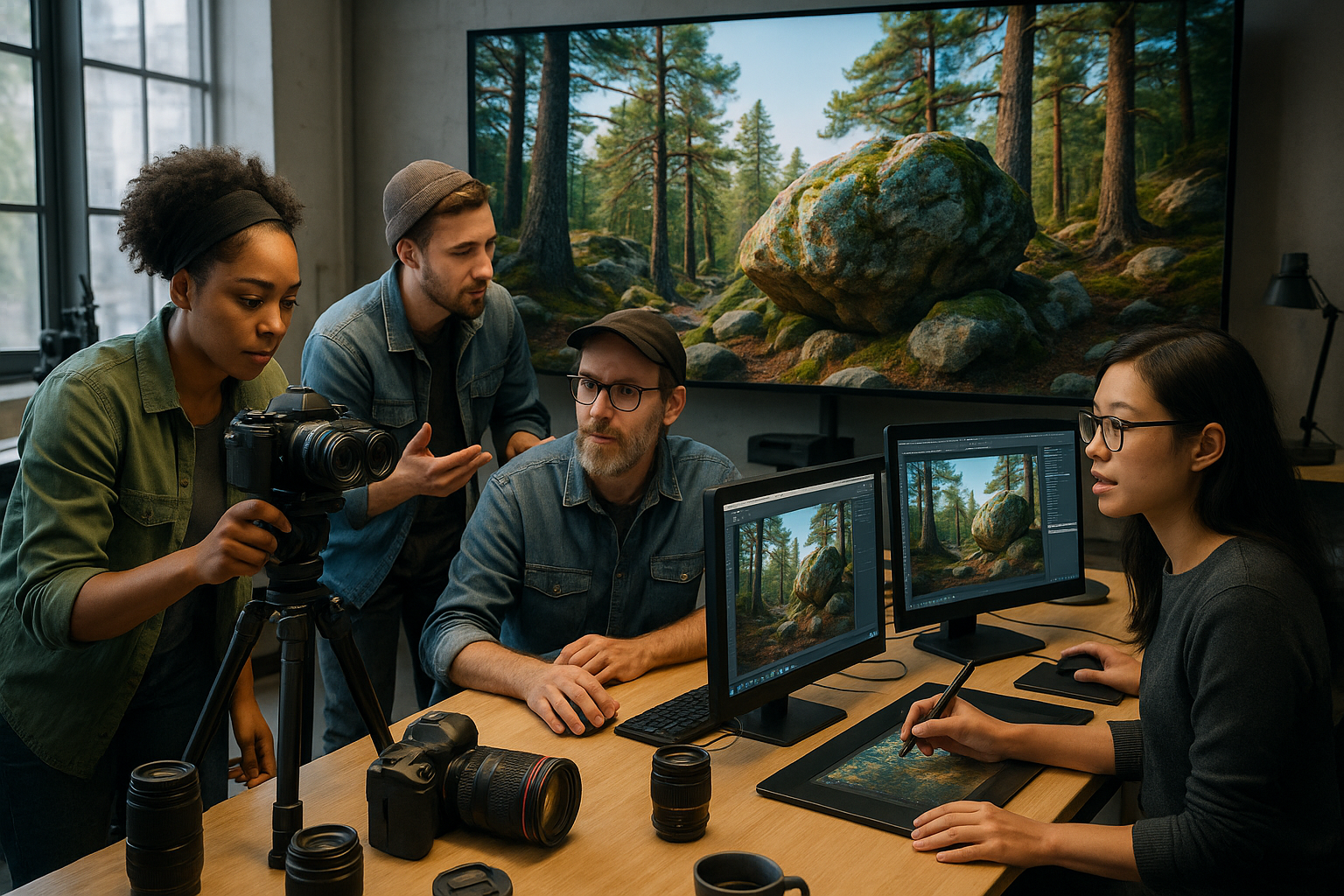In a world where capturing moments is as simple as a click, it’s easy to take for granted the intricate history and profound journey that led to the invention of the camera as we know it today. But long before selfies and smartphone photography became a part of our daily lexicon, there was the enchanting and somewhat mysterious device known as the camera obscura. This ancient tool, which translates from Latin to “dark chamber,” laid the foundational principles for modern photography and cinematography. Yet, its origins and evolution remain shrouded in layers of history that are as captivating as the images it helped produce.
Picture a time when art and science were inextricably intertwined, where the pursuit of knowledge was a shared quest among philosophers, scientists, and artists. It was during such an era that the camera obscura began to capture the imagination of scholars across various civilizations. From the bustling markets of ancient China to the scholarly halls of the Islamic Golden Age, the camera obscura served as both a scientific instrument and a source of artistic inspiration. But how did this simple yet ingenious device work, and who were the brilliant minds that contributed to its development? 📸
As we peel back the layers of time, this article will delve into the fascinating journey of the camera obscura, exploring its earliest mentions in ancient texts and its gradual transformation through the ages. We will venture into the minds of great thinkers like Mozi, Aristotle, and Alhazen, whose curiosity and insights propelled the camera obscura from a philosophical concept to a practical tool. Along the way, we will also examine the cultural and scientific contexts that allowed such innovations to flourish, offering a glimpse into the vibrant intellectual landscapes of their respective eras.
Join us as we embark on this historical voyage, unveiling the ancient magic of the camera obscura and its enduring legacy in the world of visual arts. From its humble beginnings as a simple light experiment to its profound impact on Renaissance art and beyond, the story of the camera obscura is a testament to human creativity and our timeless quest to understand and capture the world around us. By the end of this exploration, you’ll not only gain a deeper appreciation for this pivotal invention but also discover the ways it continues to inspire and influence the technology we hold in our hands today.
The Origins of Camera Obscura: A Journey Through Time
The camera obscura, a fascinating device with a history as rich as it is long, has been captivating the imagination of thinkers, artists, and inventors for centuries. This optical marvel, which translates to “dark room” in Latin, serves as a bridge between the ancient study of optics and the modern development of photography. To fully appreciate its significance, we must travel back through time, exploring its initial conceptualizations, diverse applications, and the influence it exerted on the scientific community as well as the art world.
The roots of the camera obscura are entwined with the history of human understanding of light and vision. Philosophers from as early as the 5th century BCE, such as Mozi in China and later Aristotle in Greece, documented observations about light traveling in straight lines and creating inverted images through small apertures. These early mentions laid the groundwork for what would evolve into the camera obscura. It wasn’t until the 11th century, however, that the device began to take a more recognizable form, thanks to the pioneering work of the Arab physicist and mathematician Ibn al-Haytham, also known as Alhazen.
Alhazen’s Book of Optics, a monumental text written between 1011 and 1021, detailed the properties of light, reflection, and refraction. Within this work, he described an experiment involving a darkened room with a small hole that projected an inverted image of the outside world onto the opposite wall. This experiment was foundational, cementing the principles that would underpin the camera obscura’s operation for centuries to come. As you delve deeper into the intricacies of this ancient technology, take a moment to watch this insightful video that illustrates the concept of the camera obscura in a modern context: The Camera Obscura Explained – The Art of Photography.
The Evolution and Applications of the Camera Obscura
Throughout the Middle Ages and into the Renaissance, the camera obscura continued to intrigue and inspire. Its basic design—a dark chamber with a small aperture—underwent various refinements and adaptations. Artists and scholars of the time began to use the camera obscura as a tool for drawing and studying perspective, leading to a deeper understanding of optics and the nature of vision. The device became an invaluable aid for artists striving to capture the realism and depth of the world around them.
The 16th-century saw the camera obscura gain popularity among artists such as Leonardo da Vinci, who utilized its principles to enhance his sketches and paintings. The device was further refined by figures like Giovanni Battista della Porta, who in 1558 wrote extensively about its potential uses in his book “Magia Naturalis.” He described how it could project images onto canvas, allowing artists to trace and accurately render complex scenes—a revolutionary development in art technique.
The practical applications of the camera obscura extended beyond art. It served as a scientific instrument, aiding astronomers in safely observing solar phenomena like eclipses. By projecting an enlarged image of the sun onto a surface, scientists could study its features without risking eye damage. This method was employed by prominent astronomers such as Johannes Kepler, who improved the camera obscura’s design by introducing lenses to enhance image clarity.
Artistic Influence: Bridging Art and Science
The camera obscura’s influence on art cannot be overstated. It played a crucial role in the development of realism and perspective in Western art, allowing artists to achieve unprecedented levels of accuracy in their work. As the Renaissance gave way to the Baroque period, artists like Vermeer and Canaletto famously employed the camera obscura to capture intricate details and lifelike compositions. This technique, while sometimes criticized for its mechanistic approach, enabled artists to depict their subjects with astonishing precision.
During this time, the camera obscura also sparked debates about the nature of artistic creativity and originality. Critics questioned whether the use of such devices diminished the artist’s role in the creative process, while others argued that it was merely a tool to enhance artistic vision. This discourse remains relevant today, as technology continues to influence the way art is created and perceived.
To gain a better understanding of how the camera obscura influenced the art of the time, explore this video that dives into its historical and artistic impact: The Camera Obscura: A Hidden Tool for Artists.
The Scientific Revolution and the Camera Obscura
As the Enlightenment era dawned, the camera obscura found itself at the heart of the scientific revolution. It became an essential tool for scholars and scientists who were unraveling the mysteries of light and vision. Its role in the development of optical theory cannot be understated, as it provided a tangible way to observe and experiment with the behavior of light.
In the 17th century, figures such as Johannes Kepler and René Descartes advanced the study of optics using the camera obscura. Kepler, in particular, contributed to the understanding of image formation by introducing convex lenses into the device, thereby improving image clarity and brightness. His work laid the groundwork for future innovations in camera technology, setting the stage for the eventual invention of the photographic camera.
The camera obscura also influenced the way people understood vision and perception. The inverted images it produced challenged prevailing notions about how the human eye perceived the world. This led to new insights into the mechanics of sight, ultimately contributing to the broader field of neuroscience. The device’s ability to project an accurate yet altered version of reality offered a unique perspective on the interplay between observation and interpretation.
Technological Advancements: Paving the Way for Photography
As the 18th and 19th centuries unfolded, the camera obscura continued to evolve alongside advances in science and technology. It served as a precursor to the development of photography, bridging the gap between traditional artistic techniques and the burgeoning field of photographic imaging. The invention of light-sensitive materials and the refinement of lens technology enabled the transition from temporary projections to permanent photographs.
Innovators like Joseph Nicéphore Niépce and Louis Daguerre built upon the principles of the camera obscura to create the first practical photographic processes. Niépce’s heliograph and Daguerre’s daguerreotype represented significant milestones in capturing and preserving images. These early photographic techniques owed much to the foundational work done with the camera obscura, highlighting its enduring legacy.
The transition from camera obscura to photographic camera was not merely a technological leap but a cultural shift. It changed the way people documented their lives and the world around them, democratizing the act of image-making and paving the way for the visual culture we inhabit today. To explore the evolution from camera obscura to photography, watch this engaging video that traces the history of photographic technology: From Camera Obscura to Photography: A Historical Journey.
Camera Obscura in Contemporary Contexts
In today’s digital age, the camera obscura may seem like a relic of the past, yet its influence persists in both art and science. Contemporary artists continue to draw inspiration from its principles, exploring the interplay between light, shadow, and perception. Installations and exhibitions often feature camera obscura setups, inviting viewers to engage with this ancient technology in new and imaginative ways.
The device also serves as an educational tool, offering a tangible way to explore concepts of optics and vision. Workshops and demonstrations allow participants to experience firsthand the magic of image projection, fostering a deeper appreciation for the science of light. By engaging with the camera obscura, learners gain insights into the fundamentals of photography and imaging, bridging the gap between historical techniques and modern technology.
Moreover, the camera obscura’s enduring appeal lies in its simplicity and elegance. In a world dominated by digital screens and instant gratification, it offers a contemplative experience that encourages viewers to slow down and appreciate the nuances of light and shadow. Its ability to transform everyday scenes into ephemeral works of art continues to captivate and inspire.
Conclusion
The camera obscura, with its rich history and profound impact, remains a testament to human curiosity and ingenuity. Its journey from a simple optical phenomenon to a foundational tool in art and science highlights the interconnectedness of creativity and innovation. As we continue to explore the origins and evolution of the camera obscura, we gain a deeper understanding of the intricate relationship between technology and perception, one that continues to shape the way we see and interpret the world around us.
| Aspect | Camera Obscura | Modern Photography |
|---|---|---|
| Image Capture | Projected image onto a surface | Recorded image on film or digital sensor |
| Light Source | Natural light through an aperture | Natural or artificial light, controlled exposure |
| Image Permanence | Temporary projection | Permanent photograph or digital file |
For a closer look at the role of the camera obscura in contemporary art, check out this video that explores its modern applications: The Camera Obscura: Modern Artistic Explorations.

Conclusion: Unveiling the Ancient Magic: Exploring the Origins of the Camera Obscura
As we draw the curtains on our exploration of the Camera Obscura, it’s evident that this ancient optical device has served as a profound bridge connecting the realms of art, science, and technology throughout history. Our journey began by delving into the etymological roots of the Camera Obscura, a Latin term meaning “dark chamber,” which aptly encapsulates its fundamental principle: capturing the world through a small hole in a darkened space. This simple yet ingenious mechanism laid the groundwork for the eventual development of photography and modern imaging technology.
We traced the origins of the Camera Obscura back to ancient civilizations, including the Greeks and Chinese, who first observed and documented the phenomenon of light projection. The works of great minds like Aristotle and Mozi highlighted early understandings of optical principles that would evolve over the centuries. The contributions of Islamic scholars during the medieval period further advanced these ideas, with figures such as Ibn al-Haytham (Alhazen) being pivotal in formalizing theories of vision and light that underpin the Camera Obscura’s operation.
The Renaissance period marked a significant turning point, as artists and scientists alike began to utilize the Camera Obscura for various applications. From enhancing the precision of artistic endeavors to aiding in the study of celestial bodies, this device became an indispensable tool. Pioneering individuals such as Leonardo da Vinci and Johannes Kepler recognized the potential of the Camera Obscura in bridging the gap between perception and reality, thus influencing the course of both art and scientific inquiry.
In the subsequent centuries, the evolution of the Camera Obscura paralleled technological advancements. The integration of lenses and mirrors enhanced the clarity and brightness of the projected images, making the device more practical and accessible. These developments were instrumental in the eventual invention of the photographic camera in the 19th century, with figures like Joseph Nicéphore Niépce and Louis Daguerre building upon the foundational principles laid by the Camera Obscura.
Throughout our exploration, we have seen that the Camera Obscura is not merely a historical curiosity but a testament to human ingenuity and the relentless pursuit of understanding the natural world. Its influence extends beyond the confines of art and science, serving as a metaphor for perspective and perception. The way it captures and frames reality prompts us to consider the lenses through which we view our own lives.
As we conclude, it’s important to reflect on the enduring relevance of the Camera Obscura in today’s digital age. While technology has evolved exponentially, the fundamental principles of light and optics remain unchanged. The Camera Obscura serves as a reminder of the beauty and simplicity underlying complex systems and invites us to appreciate the intricate dance of light and shadow in the world around us.
The exploration of the Camera Obscura is a journey not just into the past, but into the essence of human curiosity and creativity. It’s a story of discovery, innovation, and the continuous quest to capture the ephemeral nature of light. As you reflect on this journey, consider the ways in which you can apply the lessons of the Camera Obscura in your own life. Whether through a renewed appreciation for the arts, a deeper understanding of scientific principles, or a more mindful approach to seeing the world, the legacy of the Camera Obscura invites you to engage with the world in new and meaningful ways.
We encourage you to share your thoughts and reflections on the Camera Obscura. How does this ancient device inspire you? In what ways can its principles be applied in contemporary contexts? Join the conversation by commenting below or sharing this article with those who might find it enlightening. Let’s continue to uncover the magic of light and shadow together, celebrating the timeless legacy of the Camera Obscura. 🌟
For those interested in delving deeper into the fascinating history and applications of the Camera Obscura, we recommend exploring the following resources:
– [The Camera Obscura and World of Illusions](https://www.camera-obscura.co.uk/) (Edinburgh)
– [Encyclopedia of Early Photography](https://www.encyclopedia.com)
– [The Met’s Heilbrunn Timeline of Art History: Camera Obscura](https://www.metmuseum.org/toah/hd/camb/hd_camb.htm)
Thank you for embarking on this enlightening journey with us. We hope it has sparked your curiosity and inspired you to see the world through a different lens. 📷✨
Toni Santos is a visual historian and artisan whose creative lens is captivated by the forgotten marvels of antique optical devices. Through his thoughtful storytelling, Toni revives the instruments that once transformed light into wonder—camera obscuras, magic lanterns, kaleidoscopes, and other ingenious tools that shaped our earliest visual imaginations.
His journey is rooted in a fascination with how humans have long sought to bend, reflect, and reveal the unseen. Whether tracing the mechanical poetry of 19th-century projectors or illustrating the tactile elegance of early lenses, Toni’s work invites us to see vision itself as an evolving art form.
Blending handcrafted design with historical inquiry, Toni brings to life the material soul of these devices—celebrating not just how they functioned, but what they meant. His creations and curated stories illuminate a world where science, illusion, and beauty were intricately linked through glass and brass.
As the curator of Vizovex, Toni shares detailed studies, reconstructed artifacts, and immersive content that help others rediscover the origins of visual technology and the magic of analog perception.
His work is a tribute to:
The craftsmanship behind early visual instruments
The wonder of seeing through the eyes of another century
The intersection of optics, art, and imagination
Whether you’re a collector, a designer, or someone drawn to the lost poetry of vision, Toni welcomes you into a world where light is a storyteller—one prism, one lens, one forgotten invention at a time.





